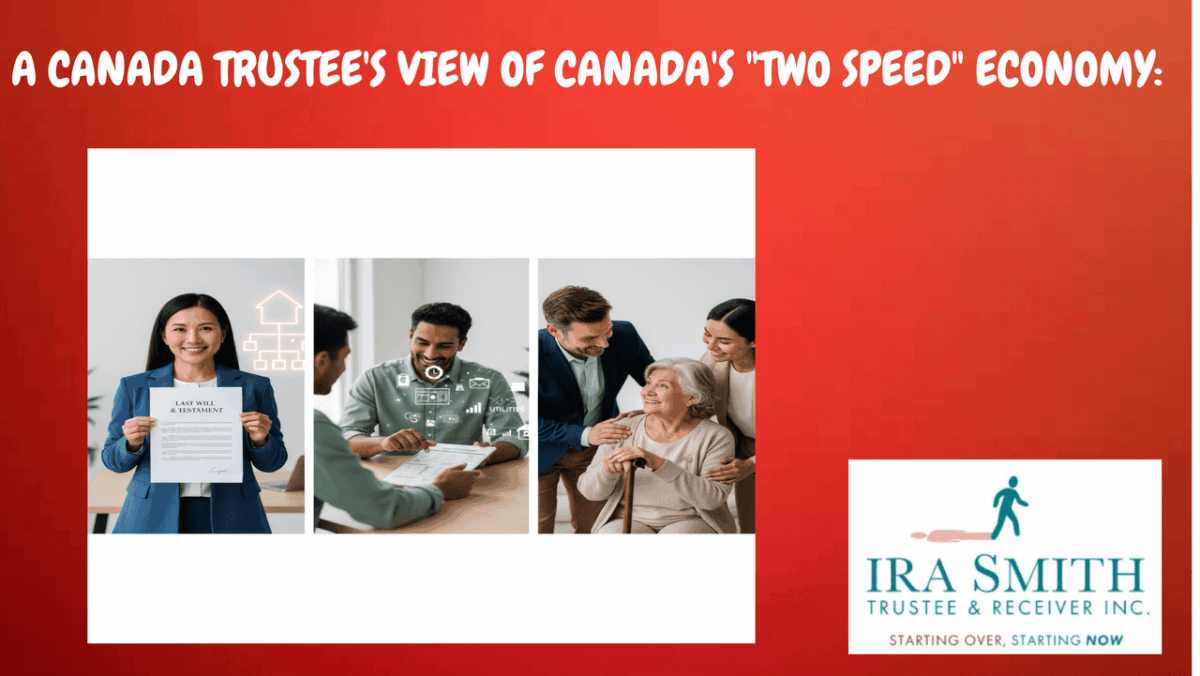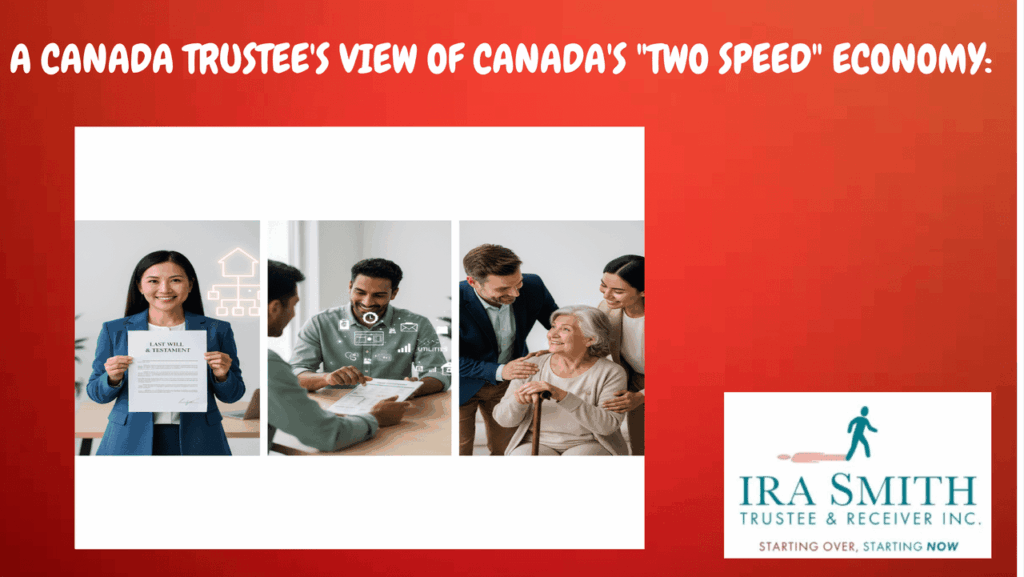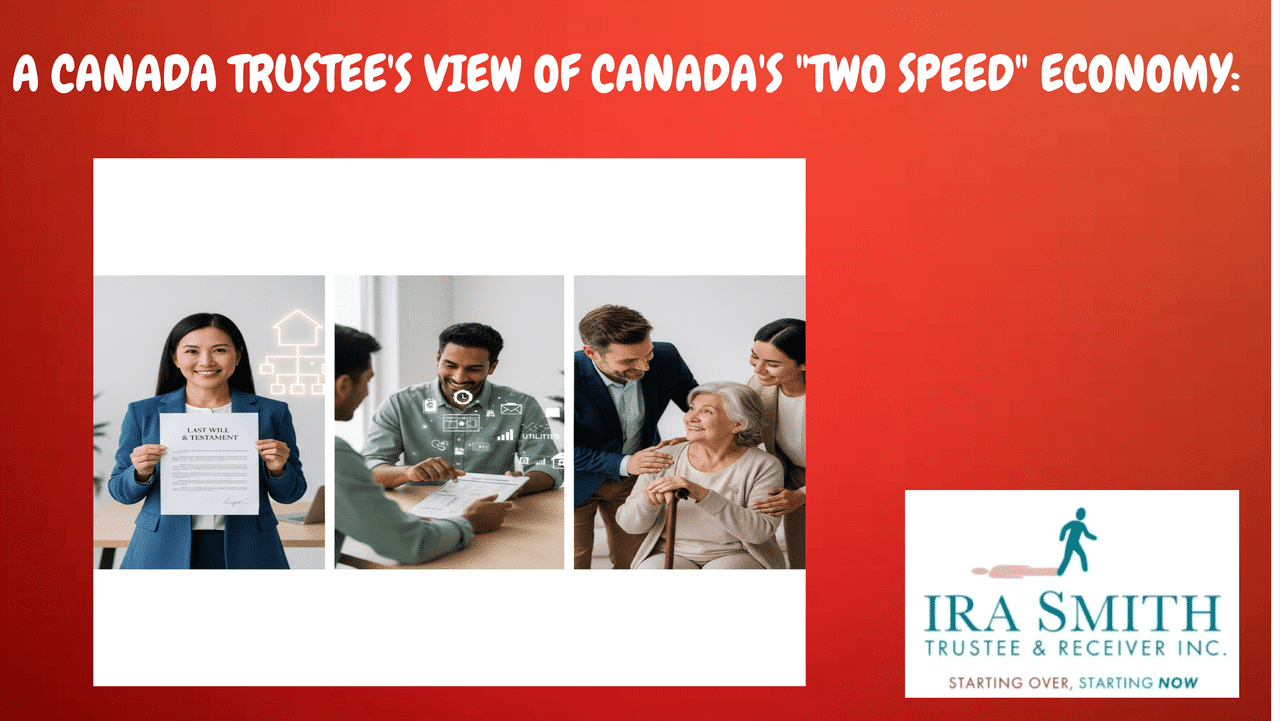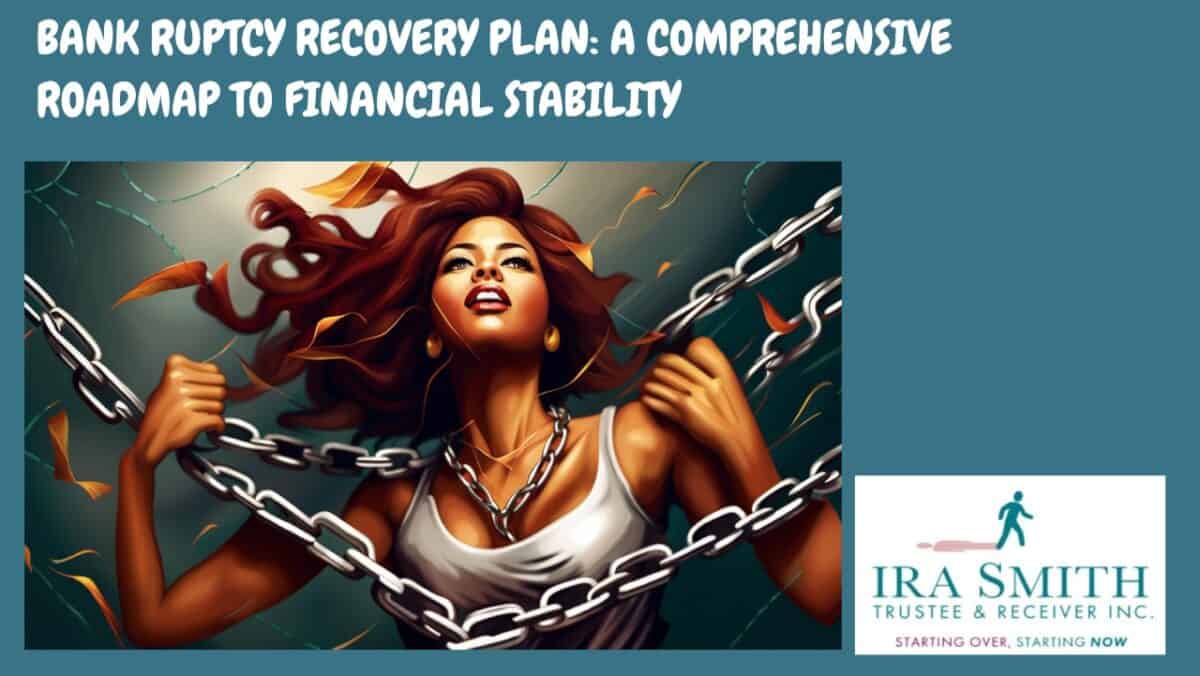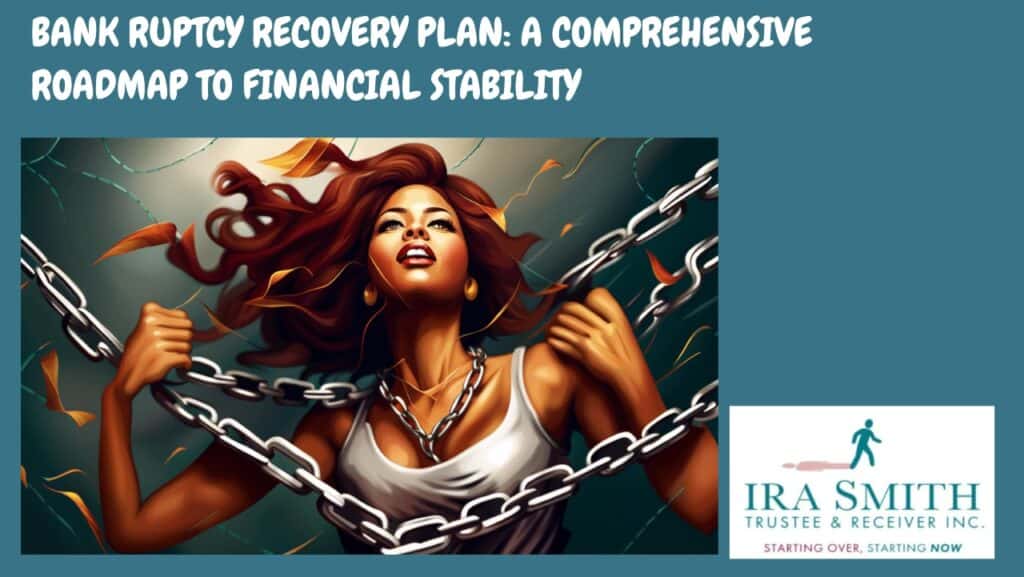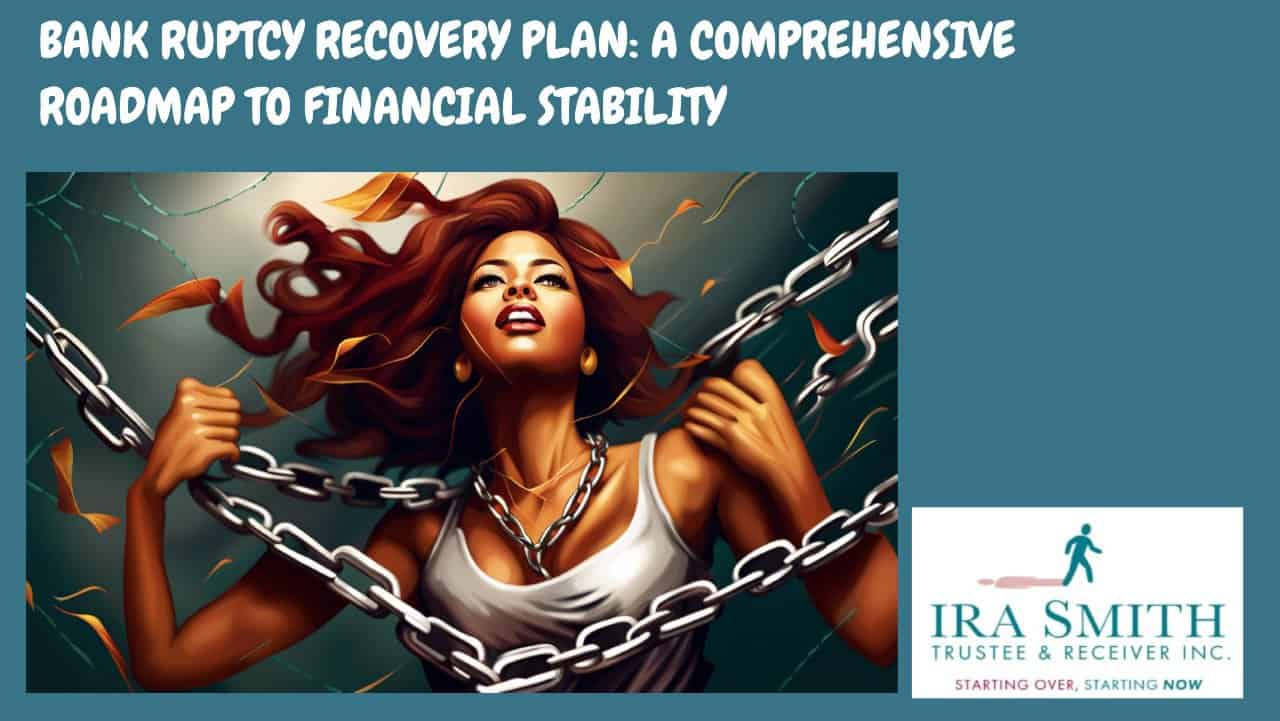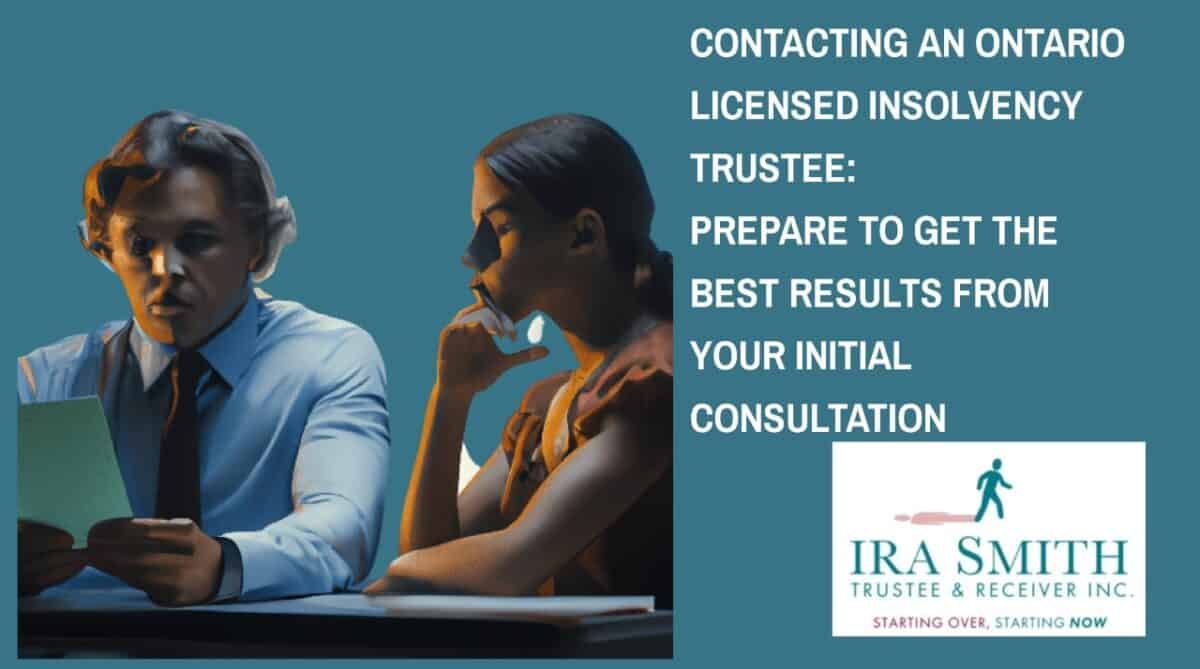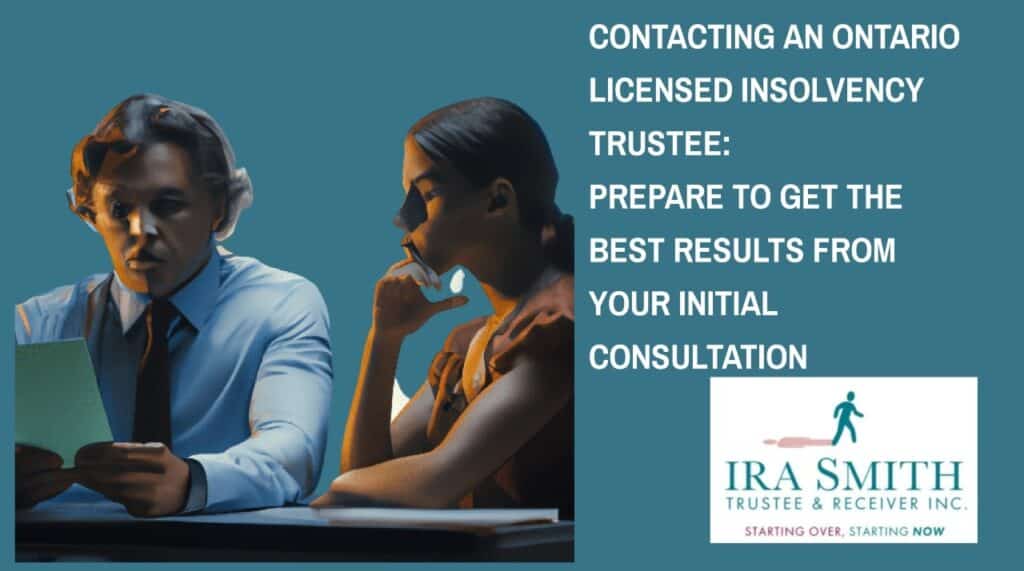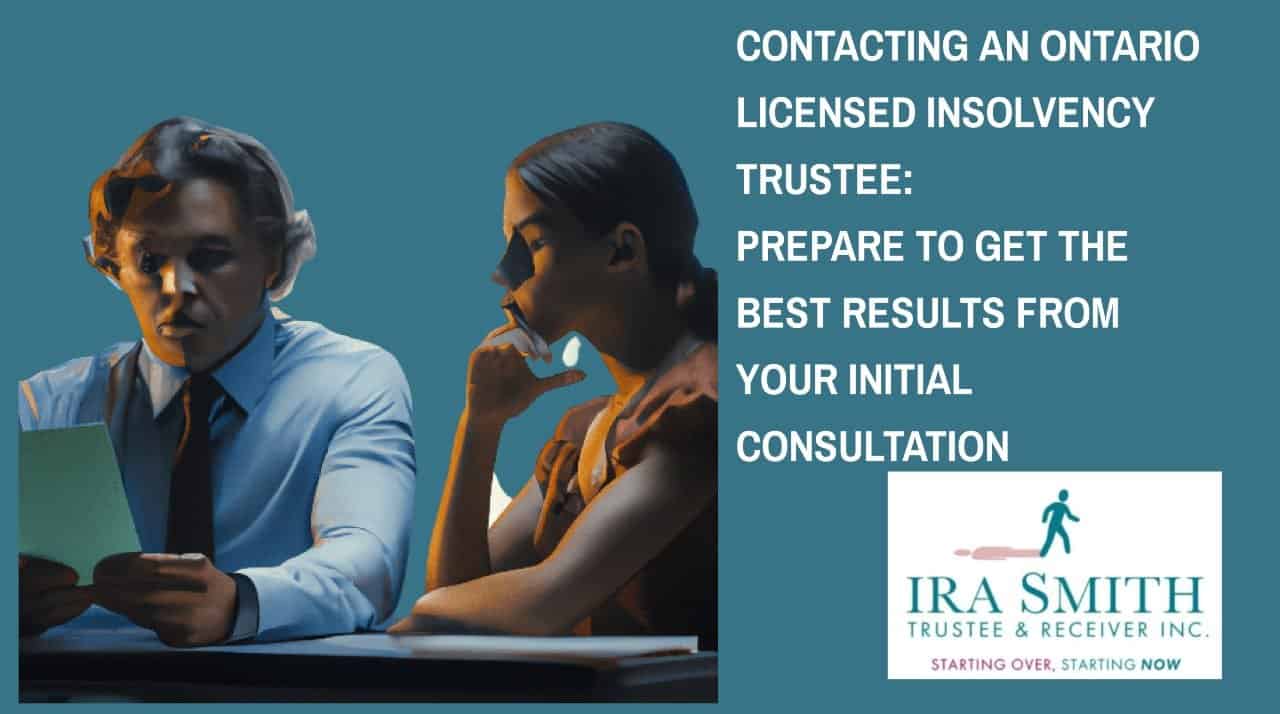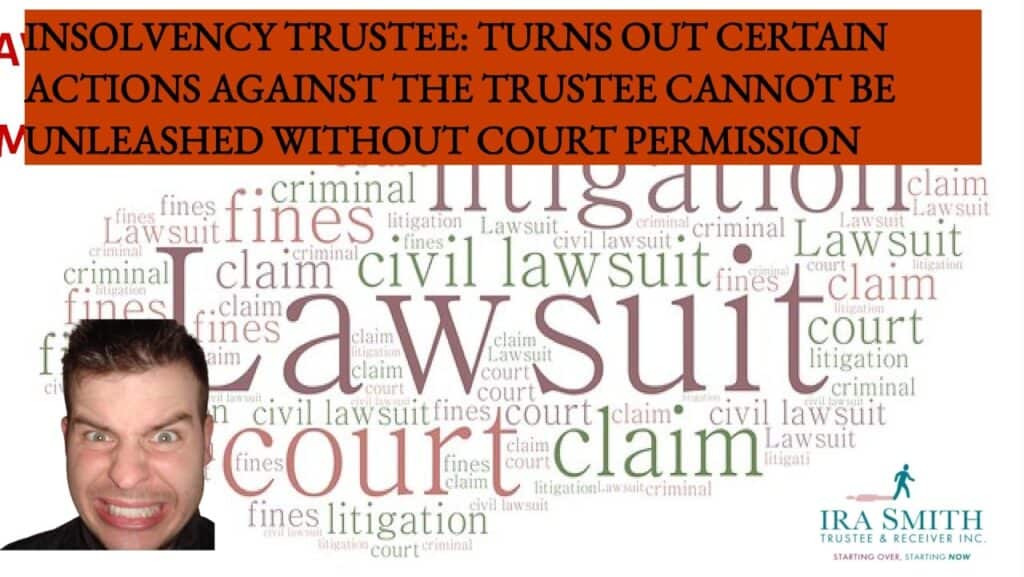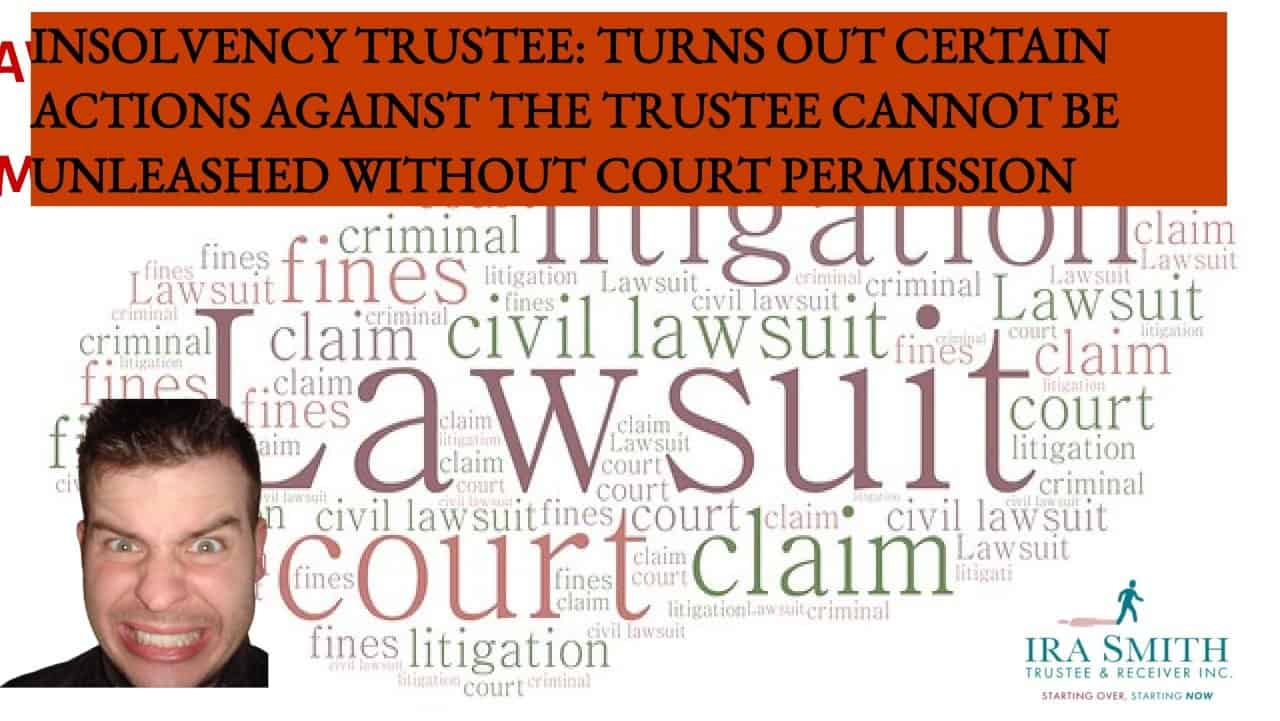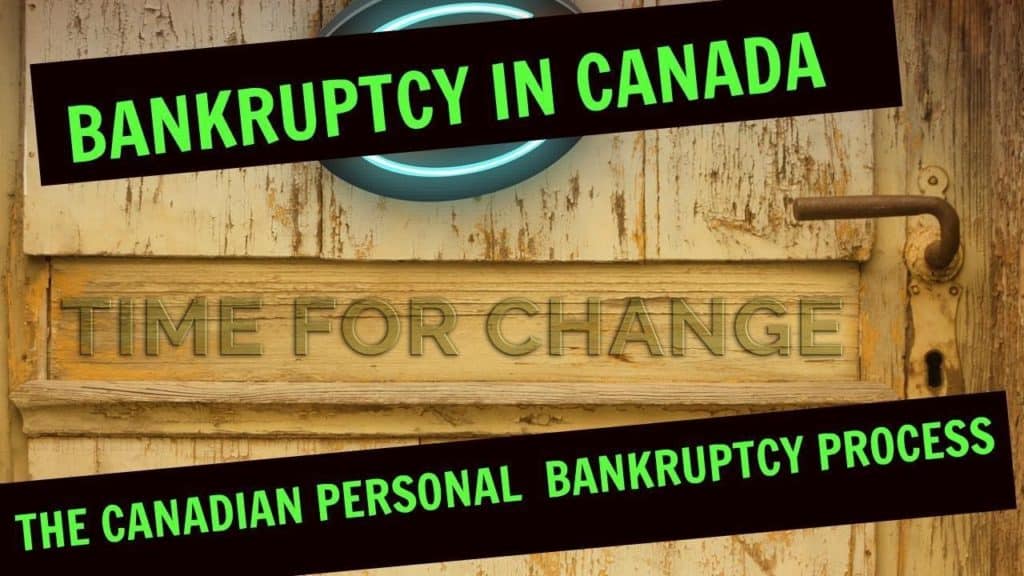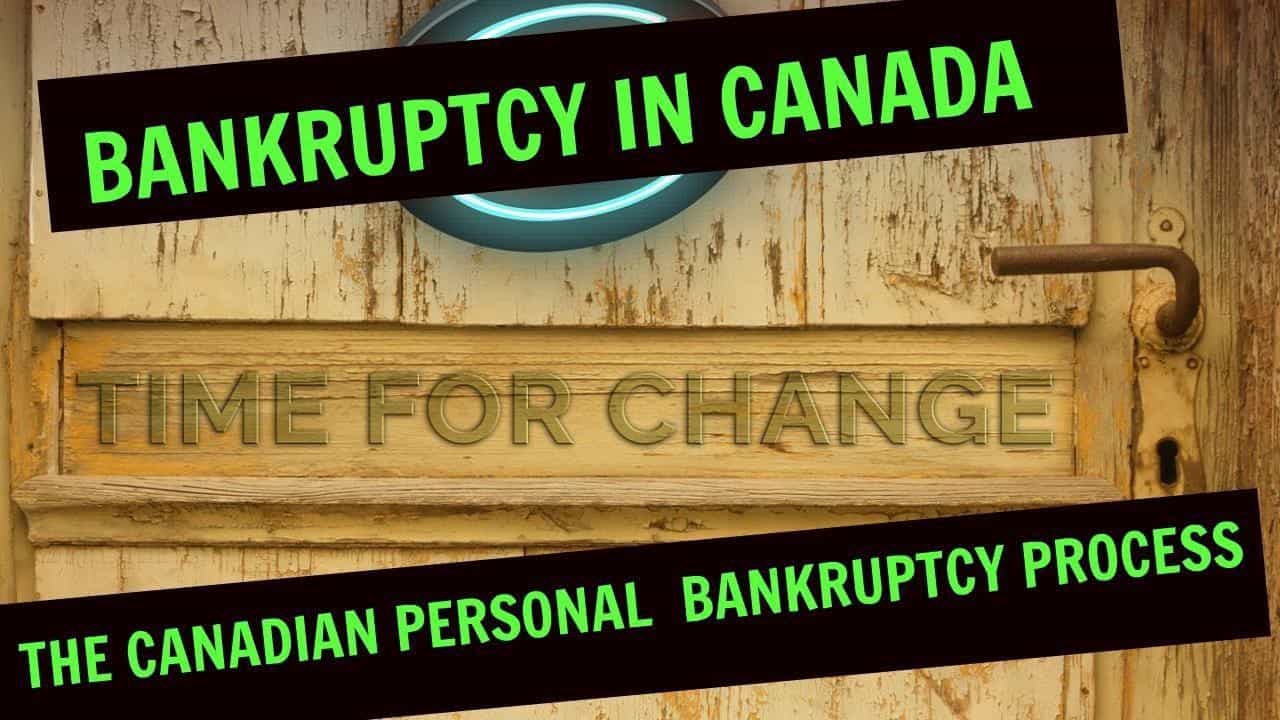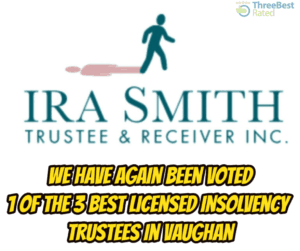Do you feel trapped by debt? The weight of endless bills, non-stop calls from creditors, and sleepless nights can make you feel like there’s no way out. You might believe your situation is hopeless, that you’ll be struggling with payments forever. But that’s not true. There is a way. You deserve a fresh start.
A fresh start means leaving your overwhelming debt behind and regaining control over your finances. It’s not just a wish; it’s a real, achievable outcome in Canada, thanks to specific federal government laws designed to help people like you. There is another good reason for a fresh start. A 2021 study found that people who made a significant change were happier than those who maintained the status quo, proving that the courage to begin again is often rewarded.
At Ira Smith Trustee & Receiver Inc., we help people just like you every single day in Ontario. We understand the stress and fear debt causes, and we’re here to show you a clear path forward. Last week I wrote about overwhelming corporate debt and the options of corporate financial restructuring to have a business fresh start vs corporate bankruptcy, to allow for the orderly and legal way to shut down a business that is no longer viable. That Brandon’s Blog is titled CORPORATE INSOLVENCY & RESTRUCTURING: FRESH STARTS FOR GREATER TORONTO AREA BUSINESSES REVEALED.
This Brandon’s Blog will guide you through your consumer debt options in Ontario, explaining how a true fresh start is possible. It’s not just about erasing debt; it’s about rebuilding your peace of mind and building a stable, brighter future. You don’t have to face this alone.
Fresh Start Key Takeaways
A fresh start from overwhelming consumer debt is truly possible in the GTA. You have legal options, such as Consumer Proposals and Bankruptcy, to manage your debt. These options provide immediate relief, stop collection calls, and offer a clear path to financial recovery.
A Licensed Insolvency Trustee, like Ira Smith Trustee & Receiver Inc., is the only professional legally authorized to help you get a fresh start through these processes. Think of us as a fresh start clinic. Acting early and seeking advice can reduce stress, offer more solutions, and help you regain control faster.
What Does a “Fresh Start” Truly Mean for Your Debt?
A fresh start in Canadian insolvency means legally resolving your overwhelming debts, usually through a formal process like a Consumer Proposal or Bankruptcy. This isn’t just a hopeful phrase; it’s a legal status where you are freed from most or in many cases, all of your old unsecured debts. This allows you to move forward without the constant burden and worry of past financial obligations.
This fresh start is more than just debt elimination; it’s about regaining your peace of mind and control over your financial life. When you get a fresh start, collection calls stop immediately. Interest on your debts freezes. You can start sleeping through the night again. The constant pressure of trying to juggle payments and avoid creditors finally ends. It gives you the space to breathe and plan for a better future.
The entire process is governed by Canadian law, specifically the Bankruptcy and Insolvency Act. This law was created to help honest but unfortunate debtors get back on their feet. It’s a process designed to help you, not to punish you. It provides a structured, legal way to deal with debt that has become too much to handle. We understand these laws inside and out, ensuring you get the full benefit of a fresh start.
Our approach to helping you solve your debt problems takes into account that a new beginning looks different for everyone. It can be a deeply personal journey of healing, a community-wide effort to support its most vulnerable, or a systemic shift that removes barriers to progress. Working with you, we develop the right plan for your unique situation to work through the critical pathways to achieving a true fresh start.
Signs You Need a Fresh Start
Recognizing the signs that you need a fresh start is the first step towards taking action and finding relief. Many people struggle for too long before seeking help, often making their situation worse. If you notice any of these signs, it’s a strong signal that it’s time to speak to a licensed insolvency trustee to explore your options:
- Are you only paying minimums on your credit cards? If your payments barely cover the interest, your debt balance cannot shrink, making true repayment impossible.
- Are you using credit to pay down other credit? This “robbing Peter to pay Paul” cycle is a clear sign that you’re in over your head and your debt is growing, not shrinking.
- Are you receiving constant collection calls or letters? Creditors won’t stop until they get paid, and these persistent calls are a major source of stress and anxiety.
- Do you feel overwhelming stress and anxiety because of debt? Debt can affect your sleep, your relationships, and your overall well-being. This emotional toll is a clear indicator that your debt is out of control.
- Are bills piling up, or are you ignoring mail from creditors? Avoiding your financial problems doesn’t make them go away; it often makes them worse by adding late fees and further interest.
- Are you considering high-interest loans (like payday loans in Toronto) to cover your regular debts? This is a dangerous trap that leads to a cycle of even higher debt and interest, making escape almost impossible.
- Are you worried about losing your home, car, or other assets due to debt? This fear is very real, and legal solutions exist to protect what’s important to you.
These are all clear signals that your debt has become overwhelming. You are not alone in experiencing these feelings or situations. Many Toronto area residents face these exact challenges. Recognizing these signs means you’re ready to explore a solution, and that’s exactly what Ira Smith Trustee & Receiver Inc. is here to help you do.
Your Options for a Fresh Start in Ontario
When you are ready for a fresh start from debt in Ontario, you have legal options that are designed to help you. These options are formal processes under the Bankruptcy and Insolvency Act, and they can only be administered by a Licensed Insolvency Trustee. The two primary options are a Consumer Proposal and Bankruptcy. Both offer powerful ways to eliminate debt and rebuild your financial life.
Consumer Proposal: Your Path to a Controlled Fresh Start
A Consumer Proposal is a formal, legal agreement where you offer to make monthly payments to pay back a portion of your unsecured debt to your creditors over a set period of time, usually up to five years. It’s a very common and effective way for many Canadians to get a fresh start without filing for bankruptcy. Instead of trying to pay back all of your debt with high interest, you pay back a smaller, affordable amount.
How it works: You, with the help of your Licensed Insolvency Trustee (LIT), you will create a proposal. This proposal outlines how much you can afford to pay each month, and for how long you will make these payments. Your LIT then presents this offer to your creditors. If the majority of your creditors (by dollar value) agree to your proposal, then all your unsecured creditors are legally bound by it.
This means you only pay back the agreed-upon amount, and the rest of the debt is forgiven once you complete your payments and your other obligations under the law, including your two mandatory credit counselling sessions. The payments are paid to the LIT, acting as the Administrator of your Consumer Proposal. The LIT is responsible for making distributions to your unsecured creditors under the Consumer Proposal.
Benefits of a Consumer Proposal:
- Stops Collection Calls Immediately: Once your proposal is filed, a legal “stay of proceedings” comes into effect. This means creditors must stop all collection activities, including calls, letters, and lawsuits.
- Interest Freezes: All interest on your unsecured debts stops accruing immediately. This is huge, as interest often makes it impossible to pay down debt.
- Keep Your Assets: A major advantage of a Consumer Proposal is that you generally keep all your assets, including your home, car, investments, and RRSPs. You don’t have to give anything up, unless your budget shows you cannot afford to continue the loan payments for a specific asset.
- Avoids Bankruptcy: For many, avoiding bankruptcy is a priority, and a Consumer Proposal offers this alternative while still providing significant debt relief.
- Flexible Payments: Your payments are tailored to your budget, making them affordable and manageable.
- Consolidates Debts: All your unsecured debts are combined into one single, monthly payment that you can afford, simplifying your finances.
Who it’s for: A Consumer Proposal is often ideal for people who have a steady income, significant unsecured debt (up to $250,000, excluding a mortgage on your primary residence), and who want to avoid bankruptcy while still getting substantial debt relief. It’s for those who can afford to make a reasonable monthly payment towards their debts.
How Ira Smith Trustee & Receiver Inc. helps: We are experts in Consumer Proposals. We will sit down with you, understand your financial situation, and help you draft a proposal that is fair to both you and your creditors. We then handle all communication and negotiation with your creditors on your behalf, ensuring the best possible outcome for your fresh start. We manage the entire process, from filing to your final payment.
Bankruptcy: The Ultimate Fresh Start
Bankruptcy is a legal process that provides the ultimate fresh start by eliminating most unsecured debts. While it might sound daunting, it is often the quickest and most effective way for individuals facing overwhelming debt to find relief and begin rebuilding their lives. It’s a legally protected process designed to give you a clean slate.
How it works: When you file for bankruptcy with a Licensed Insolvency Trustee, your unsecured debts are essentially wiped away. Your LIT will guide you through gathering your financial information, completing the necessary paperwork, and filing it with the Office of the Superintendent of Bankruptcy (OSB). Once filed, a legal “stay of proceedings” immediately takes effect, which means creditors cannot continue their collection efforts.
Benefits of Bankruptcy:
- Immediate Debt Relief: The biggest benefit is that most of your unsecured debts are eliminated very quickly.
- Stops Collection Calls and Legal Actions: Just like a Consumer Proposal, bankruptcy immediately stops all collection calls, wage garnishments, and other legal actions from creditors.
- Quicker Resolution: For most first-time bankruptcies, the process can be completed in as little as 9 months, or up to 21 months if you have surplus income.
- No Surplus Income? Then No Monthly Payments to Your LIT: Unlike a Consumer Proposal, if you do not have any surplus income, you don’t make regular monthly payments. Instead, you are responsible to only pay the fee to your LIT, which may be structured into affordable monthly amounts.
- Focus on Rebuilding: With debt gone, you can focus entirely on budgeting, saving, and rebuilding your credit for the future.
- Who it’s for: Bankruptcy is often the best choice for those with little to no non-exempt assets, overwhelming unsecured debt, and no ability to make payments under a Consumer Proposal. It’s suitable for individuals who need a potentially faster, comprehensive solution to get out from under a mountain of debt.
How Ira Smith Trustee & Receiver Inc. helps: We understand that filing for bankruptcy can feel intimidating. That’s why we are here to guide you through every single step. We will explain the process clearly, help you understand what assets might be affected (most common household items and certain others are exempt under provincial law), and ensure you understand your rights and responsibilities. Our goal is to make the process as smooth and stress-free as possible, ensuring you achieve your ultimate fresh start. We handle all the paperwork and interactions with creditors and the government, allowing you to focus on your future.
The Insolvency Process: How We Help You Get Your Fresh Start
Getting a fresh start from debt might seem complex, but with Ira Smith Trustee & Receiver Inc., the process is clear, supportive, and straightforward. As Licensed Insolvency Trustees, we are the only professionals in Canada legally authorized to administer Consumer Proposals and Bankruptcies. Our role is to be your compassionate guide through this legal journey. Here’s how we help you achieve your fresh start:
- Initial Free, No-Obligation Consultation: Your journey starts with a confidential meeting with one of our experienced LITs, Ira Smith or Brandon Smith. This first step is absolutely free and comes with no pressure or obligation. We want to understand your unique situation without judgment.
- Reviewing Your Financial Situation: During the consultation, we’ll ask about your income, expenses, assets, and debts. We gather all the necessary information to get a complete picture of your financial health. We listen carefully to your concerns and goals.
- Explaining All Your Options Clearly: Based on our review, we will explain all the available options to you. This includes Consumer Proposals, Bankruptcy, and any other non-insolvency options that might be suitable (though for overwhelming debt, insolvency options are often the most effective). We will clearly outline the pros and cons of each, helping you understand which path offers the best fresh start for you. We ensure you fully grasp how each option works and what it means for your future.
- Preparing and Filing the Necessary Documents: Once you decide on a path, we will meticulously prepare all the legal documents required for your Consumer Proposal or Bankruptcy. This can be complex, but we handle all the paperwork to ensure everything is filed correctly and on time with the Office of the Superintendent of Bankruptcy (OSB).
- Dealing with Creditors on Your Behalf: As soon as your Consumer Proposal or Bankruptcy is filed, we take over all communication with your creditors. This means no more collection calls, no more harassing letters, and no more legal actions against you. We become your shield.
- Financial Counselling: A mandatory part of both Consumer Proposals and Bankruptcy is attending two financial counselling sessions. These sessions are designed to help you understand the root causes of your debt, develop better budgeting skills, and create strategies for a healthy financial future. We provide these sessions to help you rebuild with confidence.
- Support Throughout the Entire Process: From your very first call until you receive your bankruptcy discharge or complete your proposal, we are there to answer your questions, address your concerns, and provide continuous support. We pride ourselves on our non-judgmental, empathetic approach, ensuring you feel respected and understood every step of the way. We want you to feel empowered as you move towards your fresh start.
Life After Your Fresh Start: Rebuilding and Thriving
Achieving your fresh start is a major accomplishment. The debt is gone, the collection calls have stopped, and the heavy burden has lifted. But what happens next? This isn’t just about debt elimination; it’s about setting yourself up for a stable and prosperous future. Life after your fresh start is about rebuilding and thriving, and we help prepare you for this new chapter. Family support is also crucial to you accomplishing your fresh start.
One of the most common questions we hear is about credit. Yes, both Consumer Proposals and Bankruptcy affect your credit rating. However, it’s important to see this as a temporary reset, not a permanent problem. Many people who file are already in a poor credit situation due to their overwhelming debt. A fresh start allows you to address the debt directly and then begin to proactively rebuild your credit history.
Steps To Rebuild Your Credit
- Secured Credit Card: This is often the first step. You deposit money into a bank account, and that amount becomes your credit limit. Using it responsibly and paying on time helps improve your score.
- Small Loan: After a period of good financial habits, a small, installment loan (e.g., a “credit builder loan” or an “RRSP loan”) can also help demonstrate your ability to manage credit.
- Monitor Your Credit Report: Regularly check your credit report to ensure accuracy and track your progress.
Budgeting and Financial Literacy
The mandatory financial counselling sessions you attend during your insolvency process are designed specifically for this. They help you:
- Understand your spending habits.
- Create a realistic budget that you can stick to.
- Learn strategies for saving and managing your money effectively.
- Identify and avoid common financial pitfalls.
Setting New Financial Goals
With debt out of the way, you can now set realistic and exciting new financial goals. Maybe it’s saving for a down payment, a child’s education, or retirement. Your fresh start provides the foundation for achieving these dreams.
The feeling of freedom and control that comes with being debt-free is immense. It allows you to make financial decisions based on your best interests, not just reacting to creditor demands. We don’t just help you get rid of debt; we equip you with the tools and knowledge to live a financially secure life moving forward. Your fresh start is the beginning of a brighter financial journey.
Consumer Proposal vs. Bankruptcy: Which Fresh Start is Right for You?
Choosing between a Consumer Proposal and Bankruptcy depends on your specific financial situation, your goals, and your ability to make payments. Both are powerful tools for a fresh start, but they work differently. Here’s a clear comparison to help you understand the key distinctions. We will discuss these in detail during your free consultation.
Feature | Consumer Proposal | Bankruptcy |
Debt Reduction | Pay back a portion (often 20-50%) of unsecured debts | Eliminates most unsecured debts (usually 100% forgiven) |
Assets | Generally, keep all assets (home, car, investments, RRSPs) | Non-exempt assets surrendered to the Trustee for sale |
Monthly Payments | Yes, fixed, agreed-upon monthly payment for up to 5 years made to LIT for distribution to unsecured creditors | No monthly payments directly to creditors; fees and any surplus income are paid to LIT |
Credit Impact | Initial R9 rating upon filing, and then R7 rating for 3 years after completion of the proposal | R9 rating for 6-7 years after discharge |
Duration | Up to 5 years (maximum) for repayment | 9 months (first-time, no surplus income) to 21 months (surplus income) |
Creditor Contact | Stops immediately upon filing | Stops immediately upon filing |
Public Record | Yes, public record, but generally less stigma than bankruptcy | Yes, public record, often perceived as more significant |
Who it’s for | Steady income, want to keep assets, avoid bankruptcy, can make affordable payments | Overwhelmed by debt, few non-exempt assets, need fast, complete relief |
Fresh Start FAQ Section
Many people have questions when they consider a fresh start from debt. Here are some of the most common ones we hear at Ira Smith Trustee & Receiver Inc., along with clear answers to help you understand your options better.
Q: Can I keep my house and car if I get a fresh start?
A: Often, yes. A Consumer Proposal is specifically designed to help you keep your assets, including your home and car, as long as you continue to make your secured loan payments (like mortgage or car loan payments). In bankruptcy, most common household goods, your primary home equity up to a certain point (as defined by Ontario law), and a modest car are typically protected as “exempt assets.” We will thoroughly explain how your specific assets are treated during your free consultation, ensuring you understand any potential impact. Our goal is to protect what’s important to you.
Q: How will a fresh start affect my credit rating?
A: Both a Consumer Proposal and Bankruptcy will impact your credit rating. This is a legal record of your insolvency. Upon the filing of your Consumer Proposal, your credit rating goes to R9. The successful completion of your Consumer Proposal results in an R7 rating on your credit report, which remains for two to three years after you successfully complete your Consumer Proposal.
Bankruptcy results in an R9 rating, which stays on your report for six to seven years after your discharge. While this is a temporary reset, the good news is that by eliminating your debt, you can start rebuilding your credit immediately. Many people find their credit improves faster after a fresh start than if they continued to struggle with overwhelming debt and missed payments.
Q: How much does a fresh start cost?
A: The costs for a fresh start are built into the process and are fully transparent. For a Consumer Proposal, the payment you offer covers a portion of your debts and also includes the Licensed Insolvency Trustee’s fees. These fees are set by law and are deducted from the funds collected from your proposal payments.
For bankruptcy, the fees are also set by law and are typically paid in an arrangement between you and your LIT. During your initial free consultation, we will discuss all potential costs upfront, with no hidden fees, so you have a complete understanding of your financial commitment. Our priority is making the process affordable and accessible.
Q: Can I choose my Licensed Insolvency Trustee?
A: Absolutely, yes. You have the right to choose which Licensed Insolvency Trustee firm you work with. It is very important to choose an LIT whom you trust, feel comfortable with, and who makes you feel understood and respected. The relationship with your LIT is crucial as they will be guiding you through a significant financial decision. We encourage you to speak with us and see if Ira Smith Trustee & Receiver Inc. is the right fit for your needs.
Q: Will my employer know if I file for a fresh start?
A: In most cases, no. Your employer will generally not be notified if you file a Consumer Proposal or Bankruptcy. However, the fact that you filed and basic details of your filing is a public record. There are rare exceptions where your employer may find out. This happens in situations where your:
- job requires a special financial license or bonding (e.g., certain roles in the financial sector);
- employer happens to be one of your creditors; or
- salary or wages had been subject to garnishment, and now the LIT advises your employer that it is no longer effective as a result of your fresh start insolvency filing.
For the vast majority of people, your employer will not know.,
Brandon’s Fresh Start Take
As Senior Vice-President of Ira Smith Trustee & Receiver Inc., I’ve seen firsthand the immense relief a fresh start brings to people’s lives. It’s truly transformative. People walk into our office feeling utterly defeated, embarrassed, and completely lost under the weight of their debt. They often believe there’s no escape, that they’re failures. But after just one conversation, after we explain their options and lay out a clear plan, you can see the hope return to their eyes. They leave with a plan, renewed confidence, and a revived sense of dignity. You can check out our 5-star Google reviews which confirms this relief people get.
The most important thing I want you to understand is that you are absolutely not alone. Millions of Canadians face debt challenges at some point in their lives. The Canadian insolvency system exists specifically to help people like you get back on your feet. Our role as Licensed Insolvency Trustees is to be your compassionate guide through this system. We bridge the gap between your overwhelming debt and a truly fresh financial beginning.
We are not here to judge your past financial decisions. We are here to listen without prejudice, without judgment, to understand your current situation, and provide the expert legal solutions you need to reclaim your financial future. Waiting only prolongs the stress, the sleepless nights, and the harassment from creditors. Taking that first step – reaching out for help – is often the hardest, but it is also the most powerful. It’s the very moment your fresh start truly begins. We are ready to help you take that step.
Don’t Let Debt Control Your Life Any Longer
Don’t let the burden of debt dictate your future for another day. A fresh start is not just a dream; it’s a legal reality available to you in Toronto, Vaughan, Woodbridge, Thornhill, Richmond Hill and all of the GTA It is designed to help you regain control and peace of mind.
Ira Smith Trustee & Receiver Inc. is here to help you navigate your options with unparalleled expertise, genuine empathy, and unwavering professionalism. As Licensed Insolvency Trustees, we are the only professionals authorized by the Canadian government to provide these powerful debt relief solutions. We understand the legal framework and how to apply it to your unique situation to achieve the best possible outcome.
Take the crucial first step towards your debt-free future today. You don’t have to carry this burden alone. Contact Ira Smith Trustee & Receiver Inc. now for a FREE, no-obligation consultation. Let us help you find your clear path to a brighter, financially secure tomorrow. Your fresh start is waiting.
Ira Smith Trustee & Receiver Inc. is licensed by the Office of the Superintendent of Bankruptcy and is a member of the Canadian Association of Insolvency and Restructuring Professionals.
Contact Ira Smith Trustee & Receiver Inc. Today:
- Phone: 905.738.4167
- Toronto line: 647.799.3312
- Website: https://irasmithinc.com/
- Email: brandon@irasmithinc.com
Disclaimer: This analysis is for educational purposes only and is based on the cited sources and my professional expertise as a licensed insolvency trustee. The information provided does not constitute legal or financial advice for your specific circumstances.
Every situation is unique and involves complex legal and factual considerations. The outcomes discussed in this article may not apply to your particular situation. Situations are fact-specific and depend on the particular circumstances of each case.
Please contact Ira Smith Trustee & Receiver Inc. or consult with qualified legal or financial professionals regarding your specific matter before making any decisions.
About the Author:
Brandon Smith is a Senior Vice-President at Ira Smith Trustee & Receiver Inc. and a licensed insolvency trustee serving clients across Ontario. With extensive experience in complex court-ordered receivership administration and corporate insolvency & restructuring proceedings, Brandon helps businesses, creditors, and professionals navigate challenging financial situations to achieve optimal outcomes.
Brandon stays current with landmark developments in Canadian insolvency law. He brings this cutting-edge knowledge to every client engagement, ensuring his clients benefit from the most current understanding of their rights and options.


